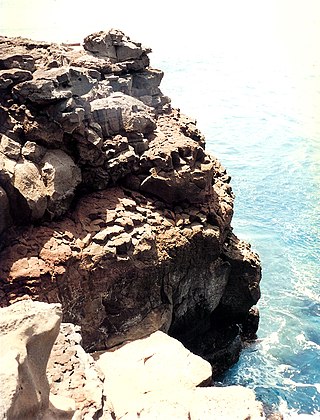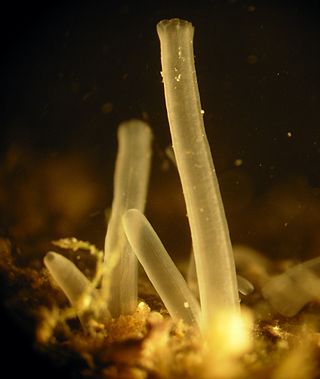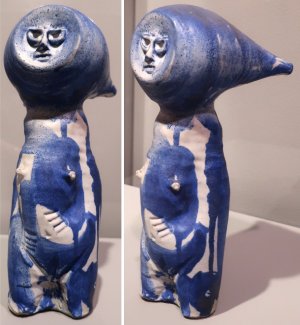John L. Culliney is an American biologist, working as a professor of biology and marine biology at Hawaii Pacific University. [1]
John L. Culliney is an American biologist, working as a professor of biology and marine biology at Hawaii Pacific University. [1]
Culliney is a graduate of Yale and Duke universities and holds a doctorate in zoology. He has taught biology and marine science in Hawai‘i since 1978 and has authored four books on subjects ranging from the North American continental shelf to the horticulture of native Hawaiian plants. He lives on the island of O‘ahu. [2]

Kailua is a census-designated place (CDP) in Honolulu County, Hawaii, United States. It lies in the Koʻolaupoko District of the island of Oʻahu on the windward coast at Kailua Bay. It is in the judicial district and the ahupua'a named Ko'olaupoko. It is 12 miles (19 km) northeast of Honolulu – over Nu‘uanu Pali.

Waimānalo is a census-designated place (CDP) in the City & County of Honolulu, in the District of Koʻolaupoko on the island of Oʻahu, Hawaii, United States. This small windward community is located near the eastern end of the island. In the Hawaiian language Waimānalo means "potable water"; it is so named for the many brackish ponds in the area that were used for irrigation. As of the 2020 census, the CDP had a population of 6,057.

The shipworms are marine bivalve molluscs in the family Teredinidae: a group of saltwater clams with long, soft, naked bodies. They are notorious for boring into wood that is immersed in sea water, including such structures as wooden piers, docks and ships; they drill passages by means of a pair of very small shells (“valves”) borne at one end, with which they rasp their way through. Sometimes called "termites of the sea", they also are known as "Teredo worms" or simply Teredo. Carl Linnaeus assigned the common name Teredo to the best-known genus of shipworms in the 10th edition of his taxonomic magnum opus, Systema Naturæ (1758).

The University of Hawaiʻi System, formally the University of Hawaiʻi and popularly known as UH, is a public college and university system that confers associate, bachelor's, master's, and doctoral degrees through three universities, seven community colleges, an employment training center, three university centers, four education centers and various other research facilities distributed across six islands throughout the state of Hawaii in the United States. All schools of the University of Hawaiʻi system are accredited by the Western Association of Schools and Colleges. The UH system's main administrative offices are located on the property of the University of Hawaiʻi at Mānoa in Honolulu CDP.

Hanauma is a marine embayment formed within a tuff ring and located along the southeast coast of the Island of Oʻahu in the Hawaii Kai neighborhood of East Honolulu, in the Hawaiian Islands.

Ka Lae, also known as South Point, is the southernmost point of the Big Island of Hawaii and of the 50 United States. The Ka Lae area is registered as a National Historic Landmark District under the name South Point Complex. The area is also known for its strong ocean currents and winds and is the home of a wind farm.

Teredo navalis, commonly called the naval shipworm or turu, is a species of saltwater clam, a marine bivalve mollusc in the family Teredinidae. This species is the type species of the genus Teredo. Like other species in this family, this bivalve is called a shipworm because it resembles a worm in general appearance while at the anterior end it has a small shell with two valves, and it is adept at boring through wood.

Lloyd Sexton Jr. (1912–1990), who is also known as Leo Lloyd Sexton Jr. was an American painter born in Hilo, Hawaii on March 24, 1912. In 1931 he entered the School of the Museum of Fine Arts, Boston. In 1933 he had a show of flower paintings at the Vose Galleries in Boston, followed by exhibitions at the Honolulu Museum of Art and at Gump's in San Francisco. He spent several years in Europe, painting and traveling during the summers and studying at the Slade School of Art in London during the winters. In his third and final year of instruction there, one of his figure paintings won first prize, and in 1936 a flower painting was exhibited the Royal Academy in London. Sexton returned to Hilo in 1937 and concentrated on figure painting and portraiture. That same year his painting "Nanea" was accepted and exhibited at the Royal Academy. Sexton executed a large number of portraits and, beginning in 1934, before he left for Europe, did two commissions for the Hawaiian Pineapple Company. He was a frequent and popular exhibitor in group shows in Honolulu. He also had one-person shows at Honolulu's Grossman-Moody Gallery in 1957 and at the Hilton Hawaiian Village Hotel Gallery in 1961. A retrospective of his work was held at the Contemporary Arts Center, Honolulu Advertiser Gallery, in 1966. He died in Honolulu on March 23, 1990,

The Hawaiʻi Institute of Marine Biology (HIMB) is a marine biology laboratory located on the state-owned Coconut Island in Kāneʻohe Bay.

Lyrodus is a genus of ship-worms, marine bivalve molluscs of the family Teredinidae.

Claude Horan was an American ceramic and glass artist who was born in Long Beach, California. He received a BA from San Jose State University in 1942 and an MA degree in art from Ohio State University in 1946. His wife Suzi Pleyte Horan collaborated on many of the larger projects. He was a lifeguard and longboard surfer in Santa Cruz in the late 1930s, and is credited with naming Steamer Lane.

Kamilo Beach, is a beach located on the southeast coast of the island of Hawaii. It is known for its accumulation of plastic marine debris from the Great Pacific Garbage Patch.

Lucy Goodale Thurston was a Protestant missionary and author. She was the wife of Asa Thurston and was one of the first American Christian missionaries to Hawaii. She is noted for her letters documenting her life and missionary works in the islands.

Isabella Aiona Abbott was an educator, phycologist, and ethnobotanist from Hawaii. The first native Hawaiian woman to receive a PhD in science, she became a leading expert on Pacific marine algae.

This is a list of properties and districts on the Hawaiian island of Oahu that are listed on the National Register of Historic Places. Oahu is the only major island in Honolulu County. The location of the city of Honolulu, Oahu is the most populous island in the state. There are 167 properties and districts on the island, including 16 National Historic Landmarks. Three formerly listed sites were demolished and have been removed from the Register.

Teredo is a genus of highly modified saltwater clams which bore in wood and live within the tunnels they create. They are commonly known as "shipworms;" however, they are not worms, but marine bivalve molluscs in the taxonomic family Teredinidae. The type species is Teredo navalis.
Teredora princesae is a species of marine bivalve mollusc in the family Teredinidae, the shipworms. This species lives in timber that is floating in the western Pacific Ocean.
Ruth M. Tabrah, was an American writer and ordained Buddhist minister.